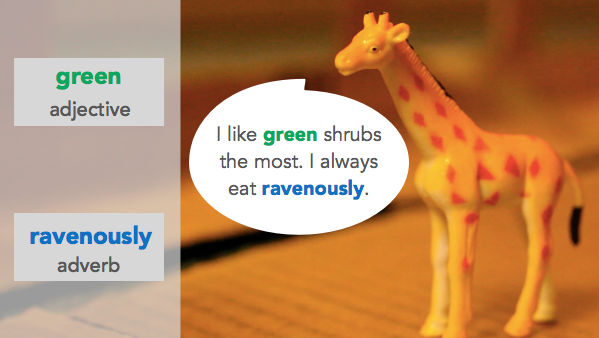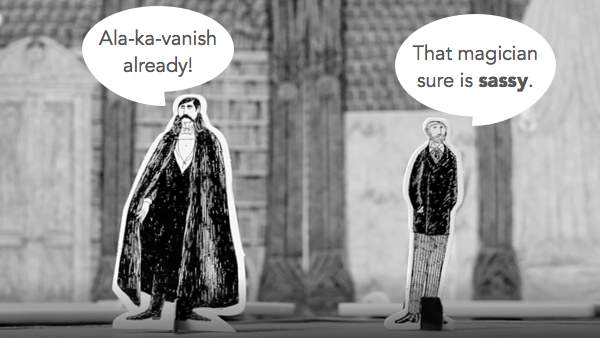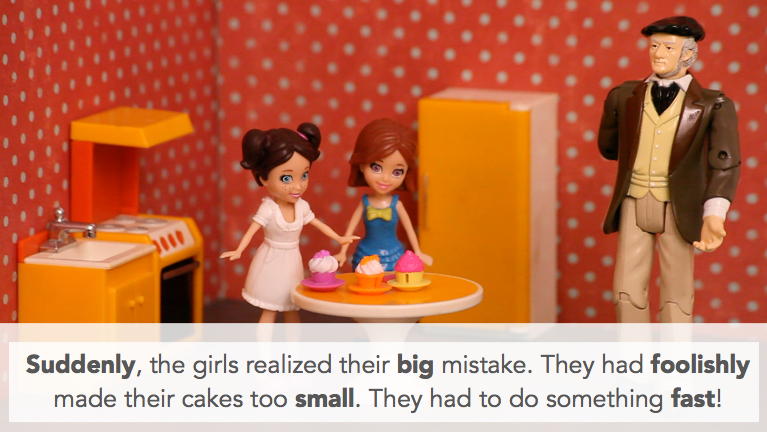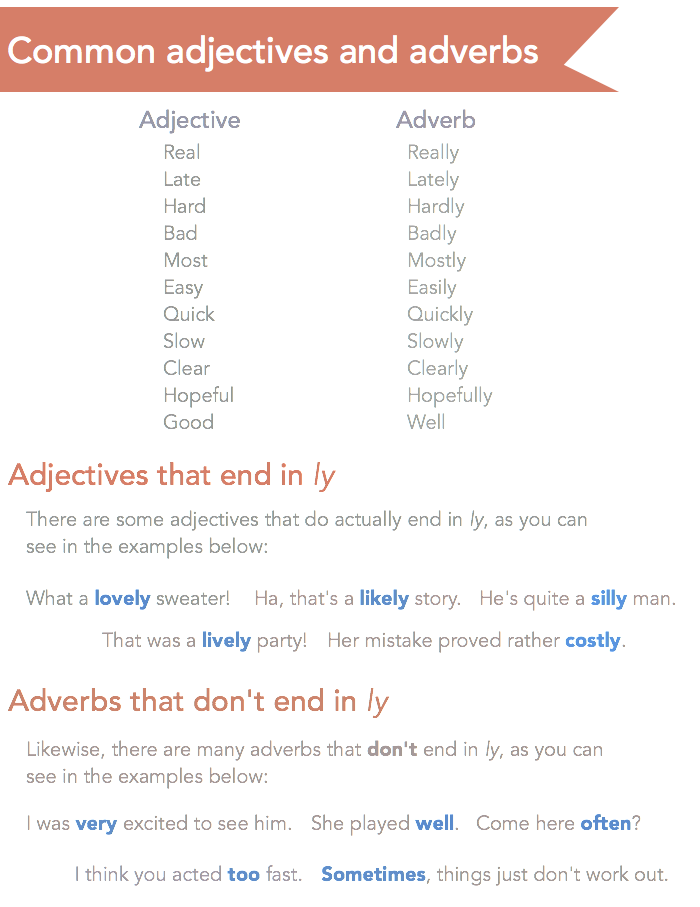how are most adjectives changed into adverbs
Lesson 9: Adjectives and Adverbs
/en/grammar/quotation-marks/content/
Adjectives and adverbs
Adjectives and adverbs are both words that describe something. If anyone has ever asked you lot to depict something in detail, you probably used some adverbs and adjectives forth the manner. But it can be piece of cake to mix them upwards and forget which is which, so it'south important to know how each 1 is used.
What is an adjective?
An adjective is a word that describes a noun. In other words, information technology tells united states of america more nearly a particular person, place, or thing.

Adjectives also make it piece of cake to understand which thing you're talking about. In the example above, the word pink describes a particular cupcake. So pink is an describing word. If 1 cupcake was larger than the others, nosotros could have said information technology was the large cupcake.
What is an adverb?
An adverb is a word that describes a verb. Just like adjectives, adverbs are used to add together detail to a sentence. More specifically, adverbs tell us how, when, or where something happened.

In the example above, the give-and-take deeply describes how he was staring, then securely is an adverb. In this sentence, it means he was staring in a deep way. If his staring had been weird, nosotros could take said he was staring weirdly.
Using adjectives and adverbs
You know adjectives and adverbs are both words that draw something. Simply for many people, these words are also easy to mix up. Thankfully, there are some simple rules that will help you know which is which and when to use them.
Await at the context
If you lot're not sure whether to apply an adverb or an adjective, effort to effigy out what you're describing. Remember, adjectives are used to describe nouns, which means they can explicate what kind of matter you lot accept, how many things you have, or which affair you're talking about.
Adverbs, on the other hand, are used to depict verbs, which ways they tin can explain how something happened, when something happened, or where something happened.
Wait at the ending
You might have already noticed that many adverbs end with the letters ly . If y'all see a give-and-take that ends in ly , there'due south a proficient chance information technology's an adverb, non an adjective. Can y'all utilise this rule to tell what'due south wrong with this judgement?

Because it doesn't have an ly ending, you might have guessed that quick is an describing word. However, this sentence is incorrect because an adjective can't be used to depict a verb (drove).
To make this sentence right, we could modify the describing word to an adverb: He drove chop-chop. Now the sentence describes how he was driving.
Look at the placement
Here'southward an easy way to know where to put an adjective in a judgement. It volition usually appear just before the noun information technology'southward describing. Past contrast, an adverb will usually appear right afterward the verb information technology's describing.

Unfortunately, placement doesn't e'er tell you if something is an adverb or adjective. For example, is sassy an adjective or adverb in the epitome below?

Fifty-fifty though it's right side by side to a verb ( is ), sassy is an adjective considering it describes the magician. And while adjectives are ordinarily close to the words they describe, adverbs can motility around more freely in a sentence. For example, you might run into an adverb at the beginning of a sentence.

Hither, frankly is an adverb, but information technology doesn't describe whatever specific verb in the judgement. Instead, information technology means the entire judgement will be spoken in a frank, or directly, way. If he was more than optimistic, he might have said, Hopefully, it will all piece of work out .
Employ the techniques you but learned and see if you lot tin can choice out the adjectives and adverbs below.

Adverb!
This word tells us when the girls realized their error. Remember, adverbs tin can appear at the beginning of a judgement, but yous aren't very likely to run into an adjective there.
The LY ending is another clue that this is an adverb.
Adverb!
This might expect similar an describing word, because information technology'southward correct next to a substantive. However, information technology's important to see that it'south actually describing how the girls volition demand to deed (fast), rather than how fast that something is.
Adjective!
Even though it's non next to a noun, this word tells us more than almost the size of the cakes.
Adverb!
Fifty-fifty though this discussion comes before the verb it describes, it still tells the states how they made their cakes. The LY ending is another clue that this is an adverb.
Adjective!
Similar many adjectives, this ane comes correct before the noun information technology's describing. This adjective tells u.s.a. more than near the mistake.
Common adverbs and adjectives
A lot of adjectives and adverbs are really based on the aforementioned discussion, which is ane reason they're sometimes difficult to tell apart. Here's a list of the adjectives and adverbs yous'll see the near:

You can likewise place an adverb between the discussion to and a verb. This is called a split infinitive. In the by, this was considered a serious grammatical mistake, merely it's ordinarily used and accepted today.

/en/grammar/capitalization/content/
Source: https://edu.gcfglobal.org/en/grammar/adjectives-and-adverbs/1/
Posted by: johnsonaceis1957.blogspot.com


0 Response to "how are most adjectives changed into adverbs"
Post a Comment